Solar Power for Rotterdam’s Offshore Cows
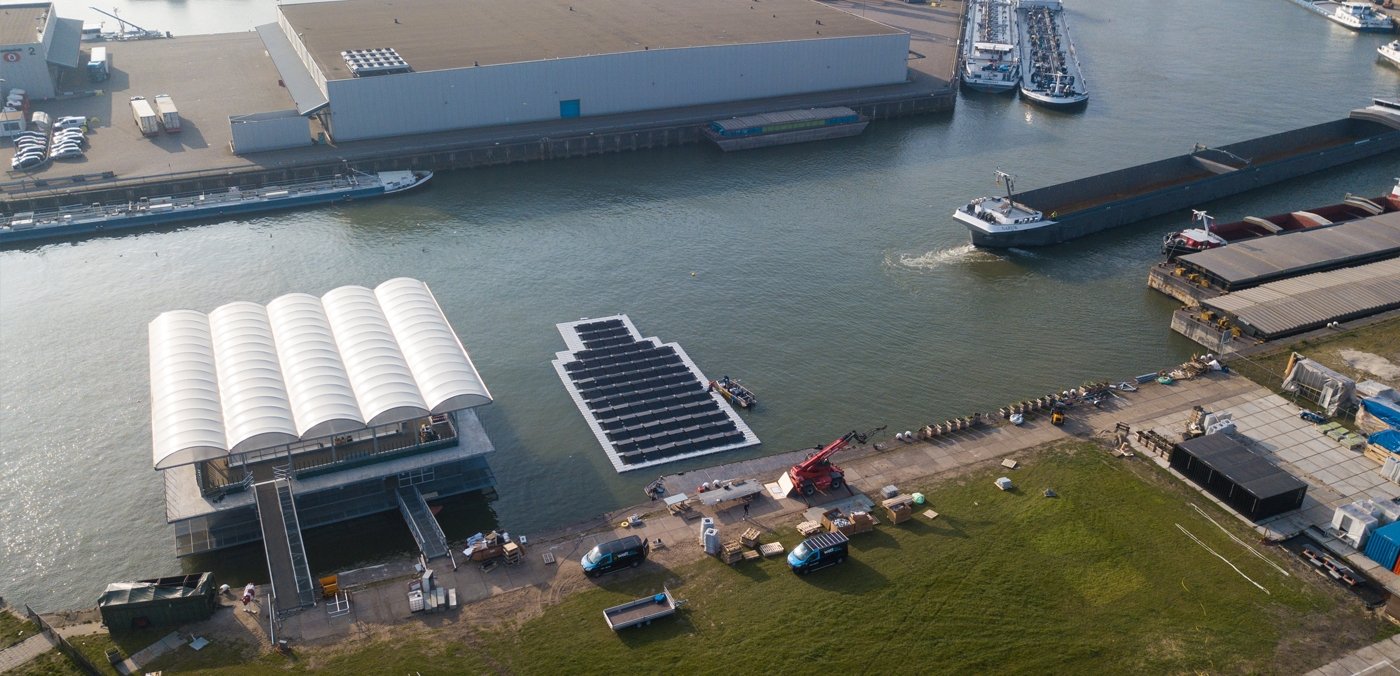
Fish, sea, salt, diesel – and cowshed. Along with the typical port smells, there is an odor that wafts through the air of Europe’s largest deep-sea port that you wouldn’t expect to find here. Away from the huge container ships just a few meters from Rotterdam’s port wall is the world’s first-ever floating farm. This one-of-a-kind sustainable project has 32 resident cows, and also a floating PV system that provides a low-cost energy supply.
If you had a bird’s-eye view of the cowshed and the PV system, you could tell straight away that they belonged together because the 170 PV modules are arranged in the shape of a milk bottle. Equipped with a Sunny Tripower CORE1 inverter, the system has a power output of 55 kW and covers a percentage of the energy requirements for the floating farm. The string inverter is perfectly suited to this system thanks to the overdimensioning possibility of up to 150 percent.
Data on efficiency and cooling effects
The milk bottle installation at Rotterdam port also serves as a “research location” for the company Profloating. Experts are hard at work here gathering data on cooling effects and the possibility of increasing efficiency by operating PV modules on the water’s surface. Roy van Beest, Profloating’s Head of Global Business: “PV systems with modules that are able to float on the water can deliver extra efficiency of between 5 and 15 percent – depending on the market. This gives us some exciting prospects for future projects.“
Still more space on the water
Profloating wants to generate more experience and knowledge about Floating Solar with this empirical data. The company has other “floating” projects in the pipeline. After all, the water is the ideal place to install PV systems that have nowhere to go due to a lack of available space on land.
Focus on recycling and sustainability
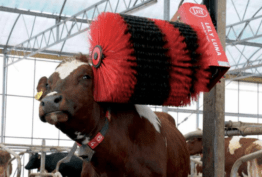 Along with sustainable power generation, the operators of the farm want to teach the city’s residents all about farming and sell their dairy products in a consumer-centric way. The one-of-a-kind project worldwide also features a sophisticated recycling system, which includes a rainwater tank, water from which is used for the cows’ drinking trough, and a treatment facility for the cow manure. The cow feed comes from potato peelings and nutritious leftovers, for example from beer brewing. The operators are currently still working on a facility to filter out minerals from the cows’ urine.
Along with sustainable power generation, the operators of the farm want to teach the city’s residents all about farming and sell their dairy products in a consumer-centric way. The one-of-a-kind project worldwide also features a sophisticated recycling system, which includes a rainwater tank, water from which is used for the cows’ drinking trough, and a treatment facility for the cow manure. The cow feed comes from potato peelings and nutritious leftovers, for example from beer brewing. The operators are currently still working on a facility to filter out minerals from the cows’ urine.
Cows feel “right at home”
The 32 resident cows feel “right at home” on their offshore residence. Vets were called in especially to give the green light before the cows moved in, confirming that the cows were not experiencing any issues with seasickness. And the animals can of course still go ashore by crossing a small bridge to reach a nearby field with fresh grass.
The floating farm is open to visitors, who can get to know the cows and discover how dairy is made.

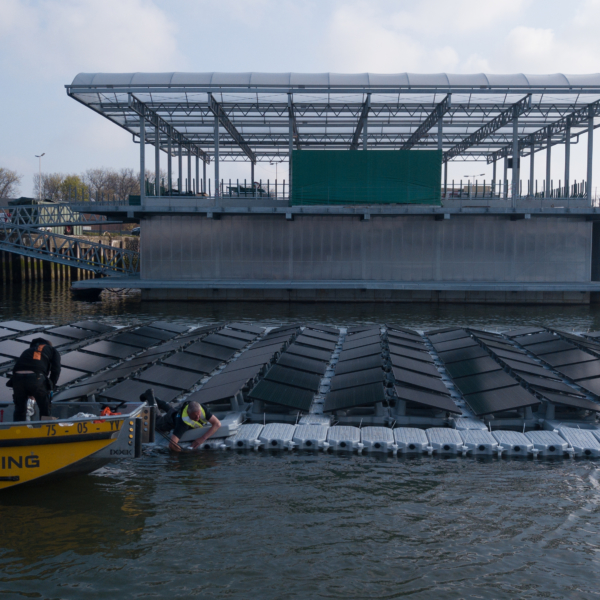
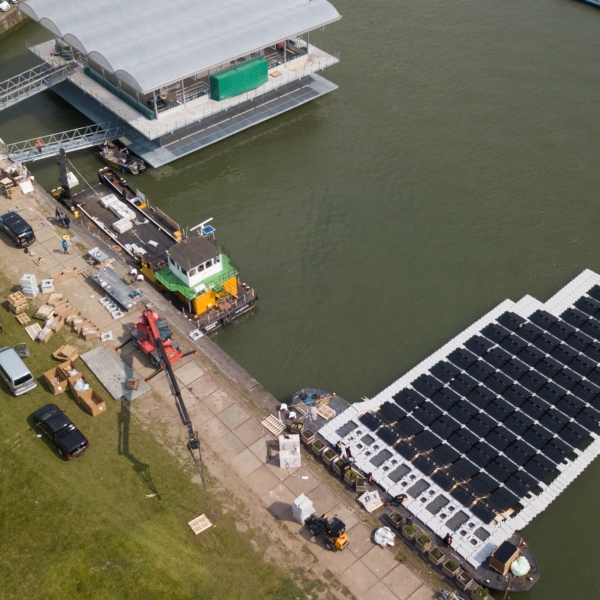
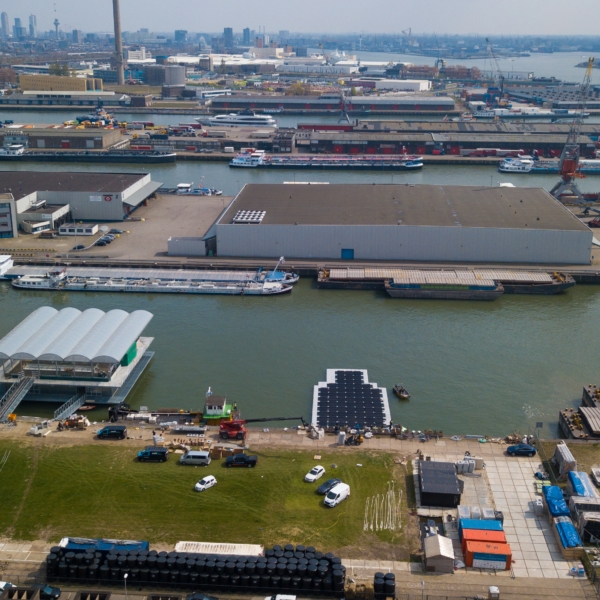
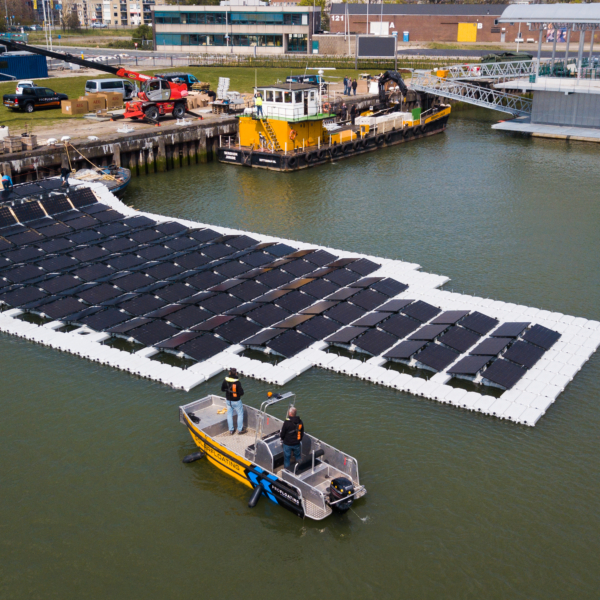
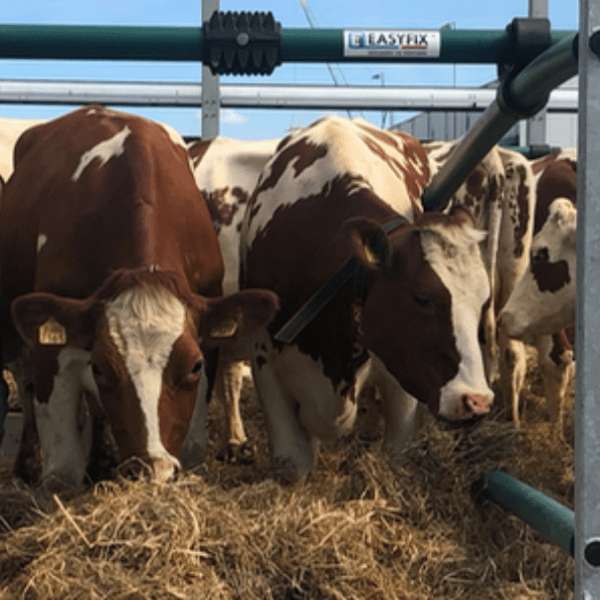
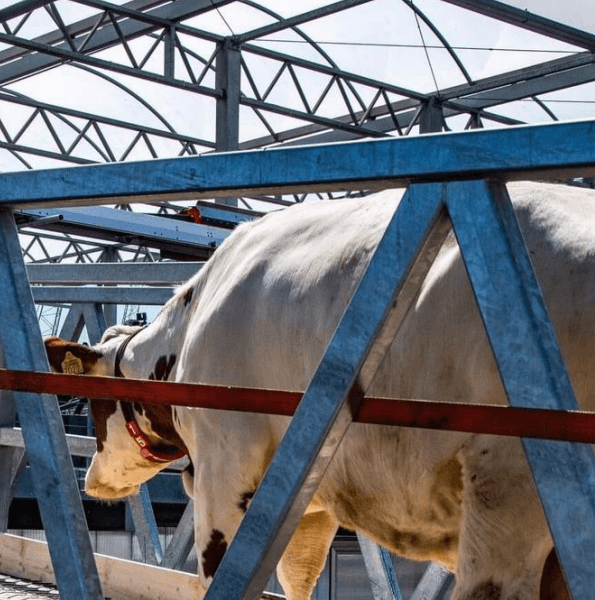
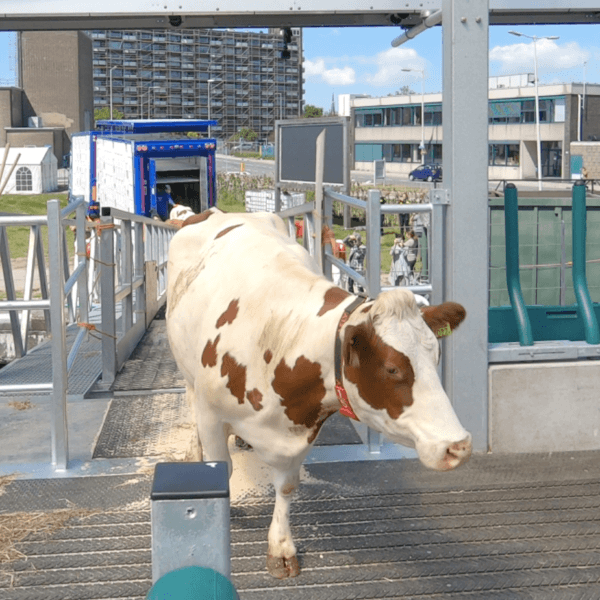
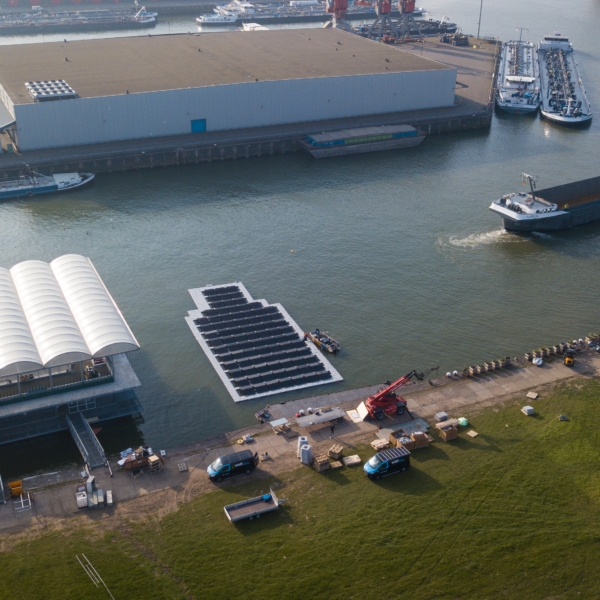
Feel free to contribute!